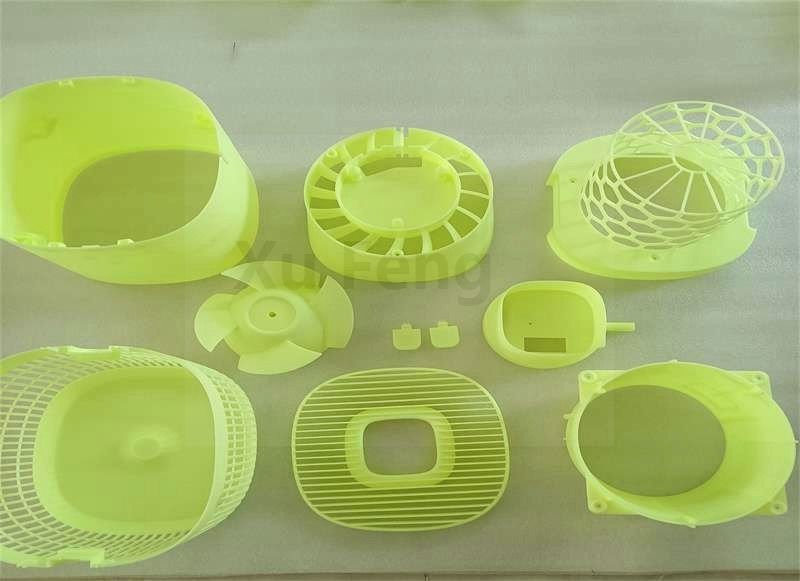Injection molding - Plastic Injection Molding Part
This is an article about injection molded parts. Click here to view more product information.
Other service categories: All products, CNC milling parts, CNC turning parts, CNC aluminum parts
Injection Molding Injection Molded Parts is a manufacturing process that involves injecting molten material into a mold or mold to produce the required parts. Injection molded parts can use a variety of materials for injection molding, mainly including various metals (the process is called die-casting), glass, elastomer, candy, and the most common thermoplastic and thermosetting polymer. Firstly, the part materials are fed into a heating barrel, mixed (using spiral screws), and then injected into the mold cavity, where they are cooled and hardened to form the cavity configuration. After the required parts or products are designed, they are usually manufactured by Xufeng industrial designer or Xufeng engineers. The molds are made of metal (usually steel or aluminum) by mold manufacturers (or tool manufacturers) and are precision machined to form the characteristics of the required parts. Injection molding - Injection molded parts are widely used in the manufacturing of various machine and product parts, from the smallest components to the entire body panels of automobiles. The advancement of 3D printing technology allows for the use of photosensitive polymers that do not melt during injection molding of some low temperature thermoplastic plastics, which can be used in some simple injection molds.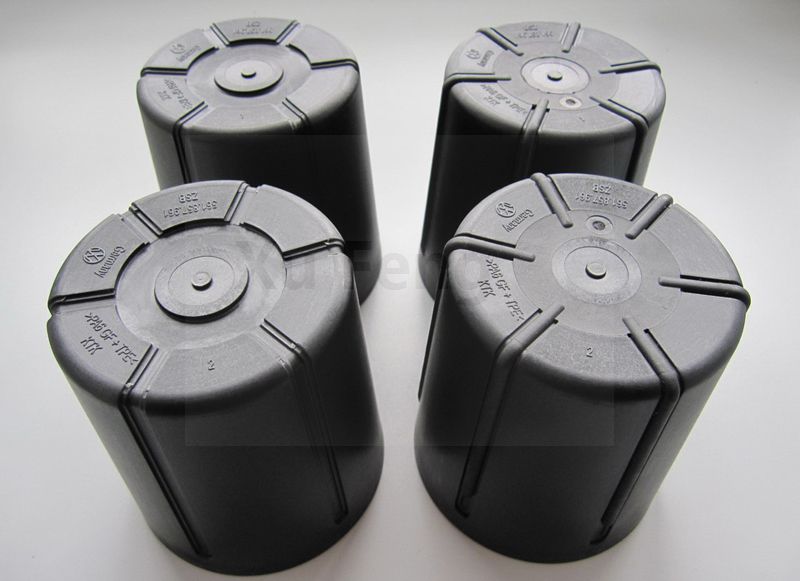
Injection molding machine - injection molded parts
Injection molding requires the use of specialized injection molding machines, which are composed of three parts: injection equipment, molds, and fixtures. To produce injection molded parts, it is necessary to design them very carefully to promote every process of molding; The materials used for the parts, the shapes and features required for the parts, the materials of the molds, product parameters, and various operating procedures and characteristics of the molding machine must be strictly considered. Xufeng's extensive design considerations and possibilities promote the versatility of injection molding.
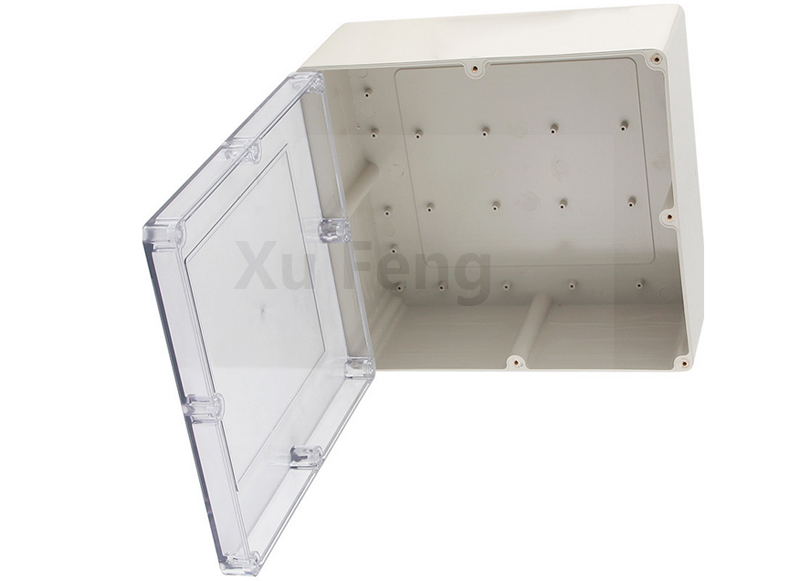
Application of injection molding:
Injection molding is widely used in the manufacturing of many things, and many plastic product components cannot be separated from injection molding, such as spools, packaging, bottle caps, automotive parts, toys, pocket combs, some musical instruments (and their parts), integrated chairs and small tables, storage containers, mechanical parts (including gears), including most plastic products available in daily life. Injection molding is the most common modern method for manufacturing plastic parts; It is an ideal choice for producing large and identical objects.
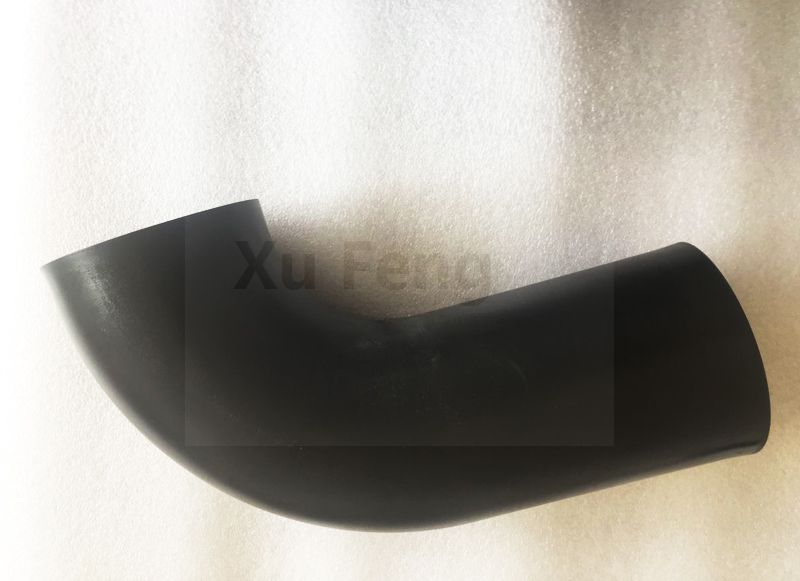
Characteristics of injection molding process:
Injection molding generally uses thermoplastic resin particles for molding. Injection molding parts use plunger or screw plunger to press molten plastic or rubber materials into the mold cavity for plastic volume, so that the parts can be solidified into the shape consistent with the mold contour. It is most commonly used for processing thermoplastic polymers and thermosetting polymer, the amount of the former is much higher. Thermoplastics are widely used because they have characteristics that are very suitable for injection molding, such as easy recycling, versatility for various applications, and the ability to soften and flow during heating. Thermoplastic is safer than thermosetting plastic. Injection molding is that if the thermosetting polymer is not ejected from the injection barrel in time, chemical correlation may occur, which may cause the screw and check valve to jam, and may damage the injection molding machine.
In addition, injection molding involves high-pressure injection of raw materials into a mold to shape the polymer into the desired shape. Injection molds are not fixed and can be single cavity or multi cavity. In various cavity molds, each cavity can be the same and form the same part, or it can be unique and form multiple different geometric shapes in a single cycle. Injection molds are usually made of tool steel, but stainless steel and aluminum molds are suitable for certain applications. Aluminum molds are usually not suitable for mass production or parts with narrow dimensional tolerances, as they have poor mechanical properties and are more prone to wear, damage, and deformation during injection and clamping work. However, they also have certain advantages. Aluminum molds have lower cost-effectiveness advantages in low volume applications, as mold manufacturing costs and time are correspondingly reduced to very short. Many steel molds are designed to process over hundreds of thousands or even millions of parts within their lifespan, with manufacturing costs ranging from hundreds of thousands to even hundreds of dollars.
When thermoplastic plastics are used for part forming, the raw materials for granulation are usually transported through a hopper to a heating bucket with reciprocating screws for processing. When entering the heated barrel, molecular chemical reactions at higher thermal states increase the space between granulations, increase the temperature, and weaken the van der Waals force that resists the relative flow of individual chains. This process can reduce the viscosity of the polymer itself, allowing it to flow under the driving force of the injection unit. The screw transports the raw materials forward, mixes and homogenizes the heat and viscosity distribution of the polymer, and reduces the required heating time by mechanically shearing the material and adding a large amount of friction heating to the polymer. The material is transported forward through a check valve and collected into a volume called a projectile at the front of the screw. Pellets are the material volume used to fill the mold cavity, compensate for shrinkage, and provide cushioning (approximately 10% of the total volume of pellets, retained in the cylinder and preventing the screw from touching the bottom) to transfer pressure from the screw to the mold cavity. When sufficient material is collected, it is forced into the part forming cavity under high pressure and high speed. The exact shrinkage is a function of the resin used and can be relatively predicted. In order to prevent excessive pressure peaks, the heating process generally uses transfer positions corresponding to 95-98% full cavity, where the screw switches from constant speed to constant pressure control at a specified position. The injection time is usually much less than 1 second. Once the screw reaches the transfer position, packing pressure is applied to complete mold filling and compensate for thermal shrinkage. Compared to many other materials, the thermal shrinkage of thermoplastic plastics is relatively high. Apply packing pressure until the gate (cavity inlet) solidifies. Due to its small size, the gate is usually the first place to cure the entire thickness. Once the gate solidifies, no more material can enter the cavity; Therefore, the screw reciprocates and obtains the material for the next cycle, while the material inside the mold cools down, allowing for discharge and maintaining dimensional stability. By using a cooling pipeline with circulating water or oil from an external temperature controller, the duration of this cooling will be correspondingly shortened. When the required temperature is reached, the mold will open, with a series of pins, sleeves, demolding tools, etc
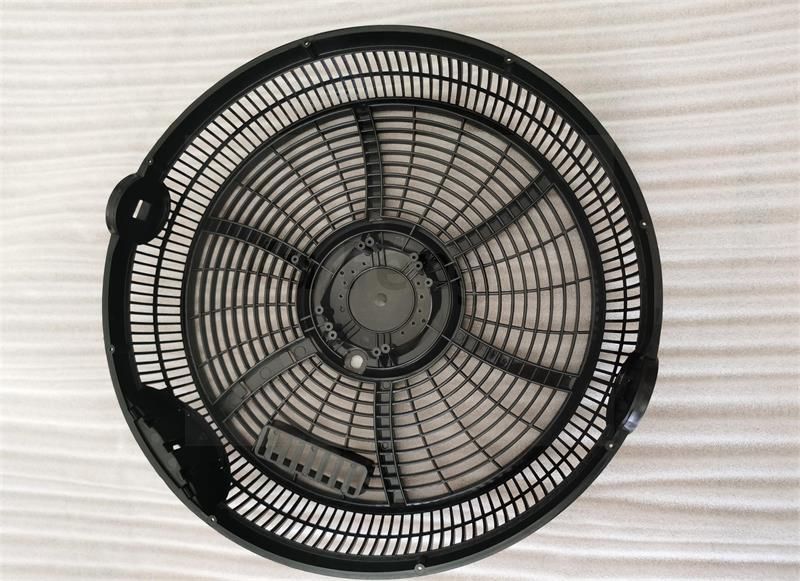
Polymers best suited for this process in injection molded parts:
Most polymers, also known as resins, can be used for injection molding, including all thermoplastics, some thermosets, and some elastomers. Available materials include alloys or mixtures of previously developed materials, so Xufeng product designers will select materials with the best properties from a large number of product screenings for plastic parts. The main criterion for selecting materials is to manufacture according to the strength and function required for the part's use, and the cost quotient is also invested according to the highest standard, and each processing material has different molding parameters, which must also be considered. Other considerations when selecting materials Injection molding materials include flexural modulus, or the degree to which a material can be bent without damage, as well as heat distortion and water absorption. Common polymers such as epoxy and phenolic resins are examples of thermosets, while nylon, polyethylene, and polystyrene are thermoplastics. Until recently, plastic springs were not possible, but advances in polymer properties make them very practical now. Applications include buckles for securing and disconnecting webbing for outdoor equipment.